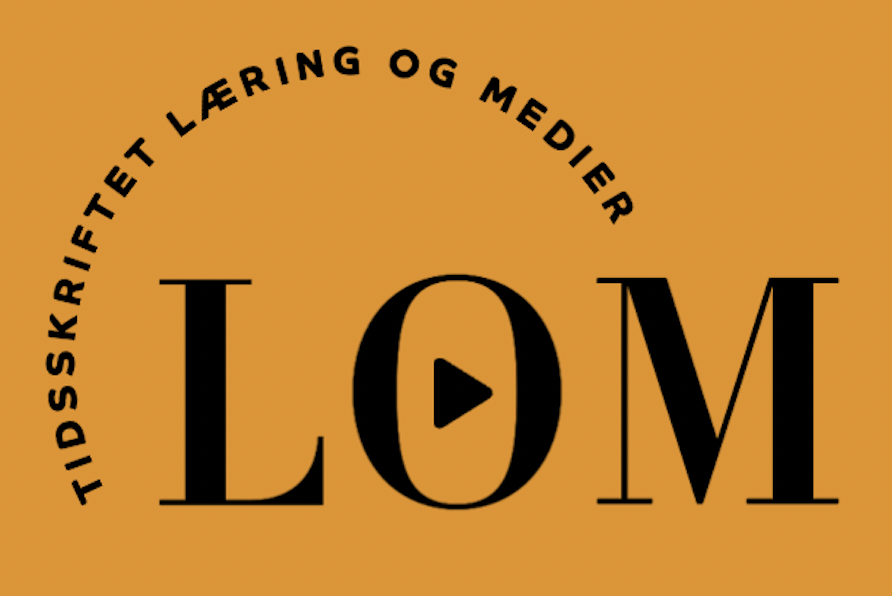Designtænkning som didaktisk metode: Læringsdesign for teknologisk forestillingskraft og handlekraft
DOI:
https://doi.org/10.7146/lom.v9i16.24201Keywords:
learning design, design thinking, designprocesser, teknologipædagogik, kritisk pædagogik, demokratisk dannelse, robotterAbstract
Det er et problem, at undervisere, lærerstuderende og elever ikke bliver mødt med tilstrækkelig inspiration, metoder og design til, hvorledes de kan anvende teknologier i undervisningen på måder der understøtter teknologisk forestillingskraft, handlekraft og kritisk-kreativ teknologisk dannelse. Dette forsøger denne artikel at adressere gennem at tilbyde forståelsesramme, struktur, procesmodel og konkret case-eksempel for hvorledes man kan arbejde med designtænkning som didaktisk metode til udformning læringsdesign for kritisk-kreativ teknologisk forestillingskraft og handlekraft. Artiklen kobler designtænkning og læringsdesign sammen til designtænkende læringsdesign for undervisere og læringsdesign for designtænkning for studerende og elever. Disse formater beskrives dernæst som åbne didaktisk-pædagogiske læringsdesign og centrale strukturer, elementer og faser fremstilles og beskrives. Pædagogisk tænkning for kritisk-kreativt medborgerskab inddrages til at underbygge modellens didaktisk-pædagogiske potentiale. Designtænkende læringsdesign for demokratisk dannelse præsenteres dernæst gennem en konkret case Future-Tech-Town Year 2060. I konklusionen udvides perspektivet til uddannelsesarbejde med læringsdesign der sigter mod kritisk-kreative fremtids-skabere med teknologier.
Downloads
References
Aaen, J. & Forfatter2 (2015).
Anderson, L.W. & Kratwohl, D.R. (Eds.) (2001). A taxonomy for learning, teaching, and assessing: A revision of Bloom’s taxonomy of educational objectives. New York: Longman.
Bear J. (2013). Teaching for Creativity. Domains and divergent thinking, intrinsic motivation, and evaluation. In: Teaching creatively and teaching for creativity. Eds. M.B. Gregerson, H.T. Snyder and J.C. Kaufman (eds.). London: Springer, s. 175-181.
Blikstein, P. (2013). Digital fabrication and ‘making’ in education: The democratization of education. In: Walter-Hermann, J. & Büching, C. (Eds.). FabLab: Of Machines, makers, and inventors. Bielefeld: transcript Verlag, s. 203-222.
Conole, G. (2013). Designing for Learning in an Open World. London: Springer.
Craft, A., Cremin, T., Hay, P. & Clack, J. (2014). Creative primary schools: Developing and maintaining a pedagogy for creativity. Ethnography and Education 9(1), pp. 16-34.
Cross, N. (2011). Design Thinking. London: Bloomsbury.
Dalziel, J. et al. (2016). The Larnaca Declaration on Learning Design. Journal of Interactive Media in Education, 2016 Vol. 1, No. 7, s. 1-24.
Daniels, S. (2013). Facilitating creativity in the classroom. Professional development for K12 teachers. In: Teaching creatively and teaching for creativity. Eds. M.B. Gregerson, H.T. Snyder and J.C. Kaufman (eds.). London: Springer, s. 3-14.
Dewey, J. (2005; 1916). Demokrati og uddannelse. Forlaget Klim.
Ertmer, P.A., Parisio, M.L. & Wardak, D. (2013). The practice of educational/Instuctional Design. In: R. Luckin, P. Goodyear, B. Grabowski, S. Puntambekar, N. Winters & J. Underwood (Eds.): Handbook of design in educational technology. New York, NY: Routledge, s. 5-19.
Freire, P. (1974). Education for Critical Consciousness. London: Bloomsbury.
Hiim & Hippe (2014). Læring gennem oplevelse, forståelse og handling. Gyldendal.
Holmberg, J. (2014). Studying the process of educational design – revisiting Schön and making a case for reflective design-based research on teachers ‘conversations with situations’. Technology, Pedagogy and Education, Vol. 23, No. 3, s. 1-18.
Klafki, Wolfgang (1996; 2001). Dannelsesteori og didaktik – nye studier. Forlaget Klim.
Laurillard, D. (2008). Technology enhanced learning as a tool for pedagogical innovation. Journal of Philosophy of Education, Vol. 42, s. 521-533.
Maina M., Craft B. & Mor, Y. (Eds.) (2015). The Art & Science Of Learning Design. Sense Publishers.
Mor, Y. (2013). SNaP! Re-using, sharing and communicating designs and design knowledge using scenarios, narratives and patterns. In: Luckin, Rosemary; Puntambekar, Sadhana; Goodyear, Peter; Grabowski, Barbara L.; Underwood, Joshua and Winters, Niall eds. Handbook of Design in Educational Technology. London: Routledge, s. 189–200.
Mor, Y. & Craft, B. (2012). Learning Design: reflections on a snapshot of the current landscape. Research in Learning Technology, Vol. 20, s. 85–94.
Nelson, H.G. & Stolterman, E. (2012). The Design Way: Intentional change in an unpredictable world. Cambridge: The MIT Press.
Forfatter2 & Brandt, C. (2016).
Forfatter2 & Charlton, P. (2016).
Forfatter2 & Forfatter1 (2016).
Forfatter1 (2015).
Resnick, M. 1998: Technologies for lifelong kindergarten. Educational Research & Development. Vol. 46, No. 4, s. 1-18.
Resnick, M. (2007). All I really want to know (about creative thinking) I learned (by studying how children learn) in kindergarten. Proceedings of the 6th ACM SIGCHI Conference on Creativity and Cognition (C&C’07). ACM, New York, s. 1-6.
Sawyer, R.K. (2006). Educating for Innovation. Thinking Skills and Creativity, 1, s. 41-48.
Schleicher, A. (undated). The case for 21st century learning. Retrieved from: http://www.oecd.org/general/thecasefor21st-centurylearning.htm.
Schnack, K. (1998). Handlekompetence. I: Bisgaard, N.J. (red.) Pædagogiske teorier. Billesø & Baltzer.
Schulman, L. S. (2005a). Signature pedagogies in the professions. Daedalus, Vol. 134, No 3, s. 52-59.
Schumpeter, J.A. (1934). The Theory of Economic Development. Harvard University Press.
Schön, D. (2013; 1987): Uddannelse af den reflekterende praktiker – tiltag til en ny udformning af undervisning og læring for professionelle. Forlaget Klim.
Toft, H. & Forfatter2 (2016).
Vejledning for faget dansk: http://www.emu.dk/modul/vejledning-faget-dansk#fsnit-3-3-innovation-og-entreprenoerskab, afsnit 3,3
Vygotsky, L.S. (1978). Mind In Society. Harvard University Press.
Winfield, A. (2012). Robotics. Oxford: Oxford University Press.
Video: Mølgaard, J.A. & Forfatter1 (2016): “Future-Tech-Town year 2060”:
https://www.youtube.com/watch?v=Zg7Nf27LrDA&list=PLYoUzW5GhCpNCnvBi4GUi5LY_c8sCarG1
Video: Forfatter2 & Forfatter1 (2014): http://codingpirates.dk/fremtidsoe-i-vejle/
Downloads
Published
How to Cite
Issue
Section
License

Articles published in the Journal of Learning and Media are licensed under a Creative Commons Attribution-NonCommercial-NoDerivatives 3.0 Unported Licens.
Authors retain copyright and grant the journal right of first publication; simultaneously articles are licensend under the Creative Commons Attribution license: Attribution-NonCommercial-NoDerviatives (by-nc-nd). Read about this license at https://creativecommons.org/licenses/by-nc-nd/3.0/
---
At LOM.dk, you will also find articles from the discontinued Journal for the Continuing and Further Education of the Danish Universities (UNEV). Note that special rules apply to UNEV articles:
It is the authors and any other copyright holder who have the copyright of articles published under the auspices of UNEV, and access to the articles is contingent on users acknowledging and complying with the associated legal guidelines:
- Users may download and print one copy of any UNEV publication for private studies or research.
- The redistribution of articles or the use of these for revenue-funded activities or commercial purposes are not allowed.
- It is not allowed to distribute the URLs of UNEV articles.

